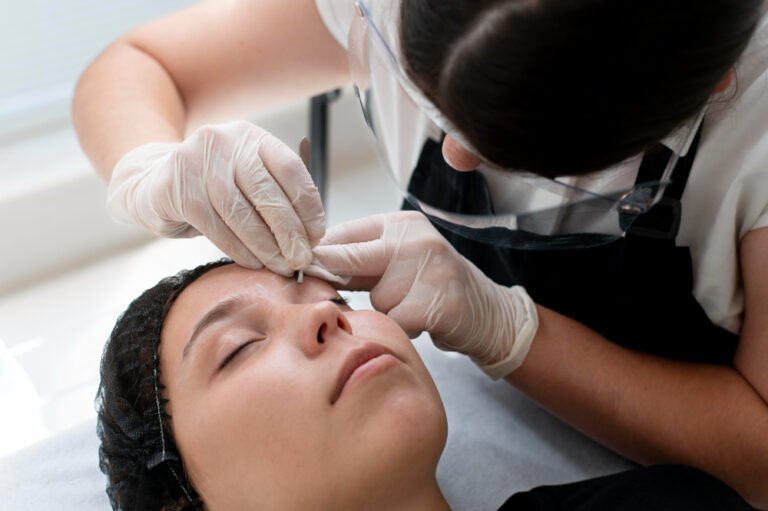Menopause hormone therapy (HT) can dramatically improve quality of life for women experiencing bothersome symptoms like hot flashes, night sweats, mood swings, and vaginal dryness. But before starting HT, it’s important to prepare thoroughly so you and your healthcare provider can make informed, safe, and personalized decisions.
This comprehensive checklist is designed to help you feel confident and ready for your hormone therapy journey. Whether you’re in perimenopause, postmenopause, or have experienced surgical menopause, the steps below will guide you through the preparation process.
✅ 1. Understand the Purpose of Hormone Therapy
Before starting treatment, know what HT is designed to do:
- Alleviate vasomotor symptoms (hot flashes, night sweats)
- Improve sleep, mood, and energy levels
- Preserve bone density and reduce fracture risk
- Support sexual health by relieving vaginal dryness or atrophy
Important: HT is not meant for anti-aging or long-term disease prevention in most patients. It’s primarily used to treat moderate to severe menopause symptoms and should be tailored to your individual risk profile.
✅ 2. Know Your Symptoms and Severity
Make a list of symptoms you’re currently experiencing:
- Are hot flashes frequent or disruptive?
- Do you have night sweats affecting your sleep?
- Are you noticing mood changes, brain fog, or irritability?
- Do you experience vaginal dryness or pain with intercourse?
- Are you fatigued or gaining unexplained weight?
Tip: Use a menopause symptom tracker for 1–2 weeks to monitor frequency and intensity. This helps your provider assess whether HT is the right treatment.
✅ 3. Gather Your Medical and Family History
Bring the following information to your appointment:
- Personal history of:
- Breast cancer
- Blood clots
- Stroke or heart disease
- Osteoporosis
- Liver or gallbladder issues
- Family history of:
- Breast, ovarian, or uterine cancer
- Heart disease or blood clotting disorders
Why it matters: Your history influences your eligibility for HT and helps determine the safest type (oral vs. transdermal) and dose.
✅ 4. Review Your Medications and Supplements
Prepare a list of:
- All prescription medications
- Over-the-counter drugs
- Herbal supplements (especially black cohosh, soy isoflavones, red clover)
- Vitamins (especially calcium and vitamin D)
Tip: Some supplements or medications may interact with hormone therapy or affect how your body metabolizes it.
✅ 5. Get Baseline Health Screenings
Before starting HT, your provider may recommend:
- Blood pressure check
- Blood tests:
- Lipid panel (cholesterol)
- Liver function tests
- Thyroid function (if symptoms overlap)
- Pelvic exam and Pap smear
- Mammogram (typically within the past 12 months)
- Bone density test (especially if you’re over 50 or at risk for osteoporosis)
These tests help establish a safe starting point and identify any contraindications to therapy.
✅ 6. Understand the Different HT Options
You and your provider will discuss:
- Estrogen-only therapy (for women without a uterus)
- Combined estrogen + progestin therapy (for women with an intact uterus)
- Systemic vs. local HT:
- Systemic: treats whole-body symptoms (pills, patches, gels)
- Local: targets vaginal symptoms only (creams, rings, tablets)
Delivery methods include:
- Oral pills
- Transdermal patches or gels
- Vaginal rings or creams
- Injections (rare)
Tip: Ask about risks, benefits, and how each option fits your lifestyle.
✅ 7. Set Clear Goals and Expectations
Hormone therapy is effective, but it’s not a “one-size-fits-all” fix. Be realistic about:
- What symptoms you want to improve
- How soon you expect to feel better (may take a few weeks)
- Your commitment to follow-up care and routine screening
✅ 8. Prepare Questions for Your Provider
Bring a list of questions such as:
- Am I a good candidate for hormone therapy?
- What are the risks based on my health history?
- How long should I plan to stay on HT?
- What signs should I watch for as side effects?
- Will this interact with other medications I’m taking?
- Can HT help with sleep, mood, or libido?
✅ 9. Create a Follow-Up Plan
Starting HT is not a “set it and forget it” process. You’ll need:
- An initial follow-up within 1–3 months to evaluate effectiveness and side effects
- Regular monitoring every 6–12 months
- Annual mammograms and other preventive screenings
- Adjustments in dosage or delivery method if needed
✅ 10. Consider Lifestyle Factors
Hormone therapy works best when combined with healthy habits:
- Nutrition: A balanced, anti-inflammatory diet supports hormonal balance
- Exercise: Resistance training helps preserve bone and muscle mass
- Stress reduction: Chronic stress can worsen menopause symptoms
- Sleep hygiene: HT can help with sleep, but good habits are key
Final Takeaway
Preparing for menopause hormone therapy is about personalized, informed, and safe decision-making. By knowing your symptoms, understanding your risks, and working closely with a knowledgeable provider, you can create a treatment plan that improves your quality of life without compromising your health.
Downloadable PDF Checklist Available:
Want to bring this checklist to your next appointment? Ask for our printable version to ensure you’re prepared for every step of the hormone therapy journey.
Ready to take the next step?
Schedule a consultation with a certified menopause specialist and build your personalized treatment plan today.




